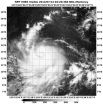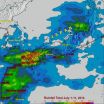(Press-News.org) Getting more people to eat seafood because it's a healthier option will need careful planning to ensure that the expansion of the aquaculture sector does not pose a risk to the environment. Business leaders in the sector should not aim only for profits, but rather embrace the principles of the One Health model that sees the health of humans being interwoven with that of animals and the environment. The model brings together experts from various fields to develop sustainable operations that ensure adequate human nutrition, and healthy environments, say Juan Gormaz of the University of Chile in Chile and David Love from Johns Hopkins University in the USA, lead authors of a study in Springer's journal Current Environmental Health Reports.
Global aquaculture production continues to increase at a rate of six percent per year. This expansion is important in the light of how many governments, including the US, have issued dietary guidelines that suggest that their citizens eat more seafood in place of some meat and poultry. This was done in reaction to the pandemic rise in non-communicable diseases such as heart disease and diabetes in many high and middle income countries, which are the result of poor lifestyle choices and diets.
The authors believe that the impact of an ever-expanding aquaculture sector can be tempered by following the integrative One Health approach. This focus will connect experts such as researchers, clinical health specialists, policy makers and veterinary scientists, who can together develop methods and policies to ensure sustainable operations and healthy human lifestyles. The model has its roots in the efforts of veterinary scientists and human health experts to combat infectious diseases that are carried over from animals to humans.
"It is important to address the animal health and environmental impacts of aquaculture as these could potentially stand in the way of a steady supply of seafood products," says Gormaz. The health risks involved in eating contaminated seafood must be identified, communicated and addressed, while alternative production methods must be developed to reduce or eliminate the need for antibiotics, pesticides and other chemicals. Experts should also work together to develop ecologically sustainable, healthy and safe animal feeds that do not contribute to over-fishing, nor compromise human food security for low-resource coastal communities.
"It is insufficient to simply increase seafood production without also taking equity and the protection of the public's health and natural resources into account," believes Love. "To address these issues, we propose applying and expanding the One Health approach, which is an existing model for promoting synergy among the disciplines of human, animal and environmental health sciences. By examining the interactions between aquaculture, fisheries, human diet and health, and ecological health, priorities can be set to enhance human nutrition and the ecological sustainability of aquaculture."
INFORMATION:
Reference:
Gormaz, J.G. et al. (2014). Public Health Perspectives on Aquaculture. Current Environmental Health Reports. DOI 10.1007/s40572-014-0018-8.
Expert collaboration is the key to sustainable fish and shellfish farming
Researchers propose 'One Health' model to guide sustainable growth of aquaculture industry
2014-07-14
ELSE PRESS RELEASES FROM THIS DATE:
Suomi NPP satellite sees Typhoon Rammasun approaching Philippines
2014-07-14
NASA-NOAA's Suomi NPP Satellite passed over Typhoon Rammasun early on July 14 and captured a visible image of the storm that showed large bands of thunderstorms wrapping into the center as it approached the central Philippines.
When NASA-NOAA's Suomi NPP satellite passed over Rammasun on July 14 at 04:20 UTC, the Visible Infrared Imaging Radiometer Suite (VIIRS) instrument aboard took a visible image of the storm. The VIIRS instrument showed large, thick bands of powerful thunderstorms wrapping into the low-level center of circulation. The largest band extended from the ...
MD Anderson researchers discover new route for ovarian cancer spread
2014-07-14
Circulating tumor cells spread ovarian cancer through the bloodstream, homing in on a sheath of abdominal fatty tissue where it can grow and metastasize to other organs, scientists at The University of Texas MD Anderson Cancer Center report in Cancer Cell.
"This completely new way of thinking about ovarian cancer metastasis provides new potential avenues to predict and prevent recurrence or metastasis," said senior author Anil Sood, M.D., professor of Gynecologic Oncology and Reproductive Medicine and Cancer Biology.
The researchers found the circulating tumor cells ...
NASA adds up Tropical Storm Neoguri's deluge from space
2014-07-14
The once-powerful Super Typhoon Neoguri weakened to a tropical storm when it dropped heavy rainfall over southern Japan during the week of July 7, 2014. NASA and the Japan Aerospace Exploration Agency's Tropical Rainfall Measuring Mission or TRMM satellite measured that soaking from its orbit in space and data was used to create a maps showing the rainfall totals.
Heavy rainfall from Neoguri fell on land that was already soaked earlier this month by a slow moving seasonal frontal system. Neoguri was reported to have caused up to five deaths and 50 injuries in Japan.
Rainfall ...
Say 'no' to interruptions, 'yes' to better work
2014-07-14
Modern office workers are expected to multitask regularly, often juggling multiple projects and priorities over the course of a day. Studies have shown that the typical employee in an office environment is interrupted up to six times per hour, but how does that impact the finished product? New research published in Human Factors evaluates how ongoing interruptions can negatively affect the quality of work.
"People don't realize how disruptive interruptions can be," said Cyrus Foroughi, coauthor of "Do Interruptions Affect Quality of Work?" and a PhD candidate at George ...
Sierra Leone samples: Ebola evidence in West Africa in 2006
2014-07-14
Analysis of clinical samples from suspected Lassa fever cases in Sierra Leone showed that about two-thirds of the patients had been exposed to other emerging diseases, and nearly nine percent tested positive for Ebola virus. The study, published in this month's edition of Emerging Infectious Diseases, demonstrates that Ebola virus has been circulating in the region since at least 2006—well before the current outbreak.
First author Randal J. Schoepp, Ph.D., recently returned from Liberia and Sierra Leone, where he spent six weeks helping to set up an Ebola testing laboratory ...
Scientists deepen genetic understanding of eosinophilic esophagitis
2014-07-14
WHAT:
Scientists funded by the National Institutes of Health (NIH) have identified genetic markers associated with eosinophilic esophagitis (EoE), an inflammatory disease characterized by high levels of immune cells called eosinophils in the esophagus. Their findings suggest that several genes are involved in the development of EoE, which can cause difficulty eating and often is associated with food allergies. The findings also may help explain why the disease specifically affects the esophagus. The work was supported in part by the Consortium of Food Allergy Research, ...
The Lancet Neurology: Personal View looks back on 40 years of the Glasgow Coma Scale
2014-07-14
A group of leading brain injury specialists look back on 40 years of the Glasgow Coma Scale and outline the continuing role of the scale in research and clinical practice, in a new Personal View published in The Lancet Neurology.
The Personal View is published on the 40th anniversary of the Glasgow Coma Scale's introduction in a 1974 Lancet article*. Since this seminal publication, the Glasgow Coma Scale has provided a practical method for bedside assessment of impairment of conscious level, the clinical hallmark of acute brain injury. The scale was designed to be ...
Story tips from the Department of Energy's Oak Ridge National Laboratory, July 2014
2014-07-14
To arrange for an interview with a researcher, please contact the Communications staff member identified at the end of each tip. For more information on ORNL and its research and development activities, please refer to one of our media contacts. If you have a general media-related question or comment, you can send it to news@ornl.gov.
MATERIALS – Rare earth substitute …
An alloy discovered at Oak Ridge National Laboratory holds great promise for permanent magnets as the material retains its magnetic properties at higher temperatures yet contains no rare-earth elements. ...
Using competitors' brand name as a keyword can backfire, INFORMS study finds
2014-07-14
Buying keywords of a popular competitors' brand names on search engines such as Google and Bing can backfire according to a new study in the Articles in Advance section of Marketing Science, a journal of the Institute for Operations Research and the Management Sciences (INFORMS).
Firms buy specific keywords, including competitors' brand names, on search engines to reach consumers searching for those words. Online advertisements employing such keywords are called search ads. Sometimes a brand such as Nissan Altima will buy search ads to reach customers who conduct a ...
Antibiotic use prevalent in hospice patients despite limited evidence of its value
2014-07-14
CORVALLIS, Ore. – New research suggests that use of antibiotics is still prevalent among terminal patients who have chosen hospice care as an end-of-life option, despite little evidence that the medications improve symptoms or quality of life, and sometimes may cause unwanted side effects.
The use of antibiotics is so engrained in contemporary medicine that 21 percent of patients being discharged from hospitals directly to a hospice program leave with a prescription for antibiotics, even though more than one fourth of them don't have a documented infection during their ...
LAST 30 PRESS RELEASES:
Routine scans could detect early prostate radiotherapy changes
Fairness in AI: Study shows central role of human decision-making
Pandemic ‘beneath the surface’ has been quietly wiping out sea urchins around the world
Tea linked to stronger bones in older women, while coffee may pose risks
School feeding programs lead to modest but meaningful results
Researchers develop AI Tool to identify undiagnosed Alzheimer's cases while reducing disparities
Seaweed based carbon catalyst offers metal free solution for removing antibiotics from water
Simple organic additive supercharges UV treatment of “forever chemical” PFOA
£13m NHS bill for ‘mismanagement’ of menstrual bleeds
The Lancet Psychiatry: Slow tapering plus therapy most effective strategy for stopping antidepressants, finds major meta-analysis
Body image issues in adolescence linked to depression in adulthood
Child sexual exploitation and abuse online surges amid rapid tech change; new tool for preventing abuse unveiled for path forward
Dragon-slaying saints performed green-fingered medieval miracles, new study reveals
New research identifies shared genetic factors between addiction and educational attainment
Epilepsy can lead to earlier deaths in people with intellectual disabilities, study shows
Global study suggests the underlying problems of ECT patients are often ignored
Mapping ‘dark’ regions of the genome illuminates how cells respond to their environment
ECOG-ACRIN and Caris Life Sciences unveil first findings from a multi-year collaboration to advance AI-powered multimodal tools for breast cancer recurrence risk stratification
Satellite data helps UNM researchers map massive rupture of 2025 Myanmar earthquake
Twisting Spins: Florida State University researchers explore chemical boundaries to create new magnetic material
Mayo Clinic researchers find new hope for toughest myeloma through off-the-shelf immunotherapy
Cell-free DNA Could Detect Adverse Events from Immunotherapy
American College of Cardiology announces Fuster Prevention Forum
AAN issues new guideline for the management of functional seizures
Could GLP-1 drugs affect risk of epilepsy for people with diabetes?
New circoviruses discovered in pilot whales and orcas from the North Atlantic
Study finds increase in risk of binge drinking among 12th graders who use 2 or more cannabis products
New paper-based technology could transform cancer drug testing
Opioids: clarifying the concept of safe supply to save lives
New species of tiny pumpkin toadlet discovered in Brazil highlights need for conservation in the mountain forests of Serra do Quiriri
[Press-News.org] Expert collaboration is the key to sustainable fish and shellfish farmingResearchers propose 'One Health' model to guide sustainable growth of aquaculture industry


